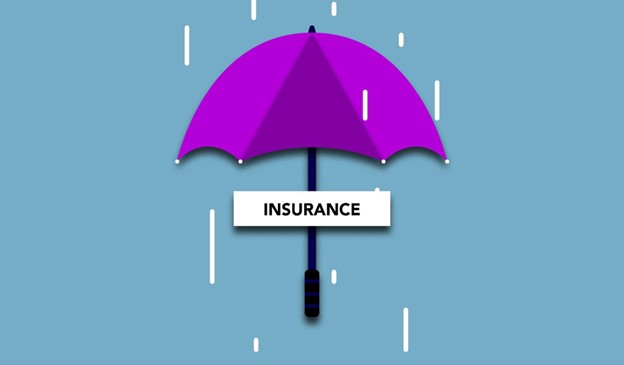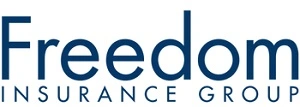Which Area Is Not Protected by Most Homeowners Insurance in Colorado?

While a standard home insurance policy (HO-3) offers protection against various perils, it’s important to note that it doesn’t encompass all potential risks, particularly those stemming from specific acts of nature.
However, by preemptively identifying the potential limitations of your homeowners insurance policy and exploring available alternatives, you can proactively safeguard your financial well-being in the face of significant losses.
For nearly two decades, we have been dedicated to assisting homeowners in securing their most valuable assets. Take a closer look into the nuances of what your Colorado home insurance policy covers and what it may leave unprotected.
Which Area Is Not Protected by Homeowners Insurance in Colorado?
Colorado homeowners should be aware of various areas typically not covered by standard homeowners insurance policies. Firstly, flood damage poses a significant concern, particularly in flood-prone regions like Colorado Springs or the South Platte Valley. Home insurance policies do not include flood coverage, necessitating homeowners in these areas to secure separate Colorado flood insurance policies.
Wear and tear, along with damage due to inadequate home maintenance, do not fall within the scope of homeowners insurance coverage. It’s imperative for homeowners to fulfill their maintenance responsibilities to avoid potential coverage issues.
While earthquakes and sinkholes are relatively uncommon in Colorado, they are not covered by standard home insurance policies. Residents in areas with a higher risk, such as those living in the southern portion of Colorado, may want to consider additional coverage options like earthquake insurance.
Pest infestations, including termite damage, fall under homeowners’ responsibility and are not covered by insurance. Implementing routine pest control measures is essential to prevent such infestations.
Renovations or additions made to a home for reasons unrelated to covered losses are typically not covered by homeowners insurance. It’s advisable for homeowners to notify their insurance provider about any renovations or additions to ensure appropriate coverage.
Excessive losses, such as damage to valuable collectibles or high-value items, may surpass policy limits. Homeowners should discuss additional coverage options and potential adjustments to policy limits with their insurance agent.
Liability claims and injuries that occur on the property are encompassed by homeowners insurance, but policy limits may apply. Homeowners might contemplate raising their liability limits or obtaining umbrella insurance for added protection.
Damage to utility lines is the financial responsibility of homeowners and is not covered by home insurance. Homeowners should be prepared for potential costs in case of utility line damage.
Sewer backup incidents are generally not covered by standard homeowners insurance policies and may entail costly repairs.
Injuries sustained by household members are not covered by homeowners insurance. Separate health insurance policies are necessary to cover medical expenses for family members, while accidental injuries to visitors fall under the purview of liability insurance.
Colorado Home Insurance Coverages
Understanding the areas typically not covered by most homeowners insurance policies can be grasped better by delving into the various coverages that constitute your home insurance.
A standard home insurance policy serves as a safeguard for your finances, home, and personal property against potential losses. Here’s how hazard insurance achieves this:
Coverage A: Dwelling
This segment of your policy is dedicated to safeguarding your home. Its primary purpose is to assist you in recovering losses pertaining to the structure of your home, including attached garages. Consequently, it usually carries the most substantial policy limits.
A common misconception among homeowners is determining the required amount of dwelling coverage. It’s crucial to distinguish between the purchase price of your home and the cost of repairing it. These are not the same.
Construction and labor costs steadily escalate over time, rendering the initial construction cost irrelevant. Without adequate coverage, you might find yourself having to pay out of pocket in the event of a loss.
Your dwelling coverage should be sufficient to completely rebuild your home’s structure in case of a major loss, like a house fire or severe wind damage. It is advisable for Colorado homeowners to revisit their coverage at least once a year to ensure they have adequate protection.
By consulting a licensed home insurance agent and discussing current market trends and your home’s requirements, you can tailor your coverage to your needs effectively.
Coverage B: Other Structures
Just as your home requires protection, so do any other structures on your property, such as sheds, detached garages, and fencing. Your other structures coverage helps you recover losses that would otherwise entail covering the repair costs independently.
The amount you choose for your dwelling coverage often influences the protection level provided by Coverage B. Home insurance companies usually base this coverage on a percentage, often around 10%, of your dwelling coverage amount.
Coverage C: Personal Property
One of the significant benefits of your home insurance policy is the protection of personal property, whether inside your home or not. It covers damage and theft of personal belongings through a claim. Nevertheless, policy limits exist, so additional limits or coverage options may be necessary for more valuable possessions.
Coverage D: Loss of Use
While smaller claims are essential, the importance of your protection truly shines when a homeowner experiences a loss so extensive that it renders the home uninhabitable. Life continues despite the damage, and you’ll still need shelter and sustenance for your household. Loss of use coverage helps cover expenses for lodging and dining while you await your home’s repair.
Coverage E: Personal Liability
Liability can be a significant concern for Colorado homeowners, as injuries occurring on your property to visitors can result in costly medical bills and potential lawsuits. Your home insurance policy offers coverage for such scenarios. Coverage E also proves invaluable if someone in your household causes a loss to another homeowner, such as a child breaking a neighbor’s window or accidentally injuring a friend while playing football.
While it’s recommended that homeowners maintain at least $100,000 in coverage, your protection may vary based on the policy limits negotiated with your insurance provider.
Coverage F: Medical Expenses
Covering a range from $2,000 to $5,000 for most homeowners, Coverage F shields you from high medical bills that can arise after injuries on your property. You can file a claim for injuries to individuals living outside your household that are injured while visiting. However, the injuries to household members will require health insurance or out-of-pocket payments.
Homeowners Insurance Provides Both Property and Liability Protection
Although not all-encompassing, your home insurance policy is a potent tool for Colorado homeowners, offering coverage for your possessions, home, and financial security against property damage and liability losses.
While not legally mandated, home insurance is indispensable for all homeowners because it facilitates:
- Restoration of your home after a loss.
- Reconstruction of your home into a habitable structure following a major loss.
- Alleviation of expenses related to housing and lodging while your home undergoes repair after a significant loss.
- Protection from liability and the ability to cover substantial legal and medical expenses arising from visitor injuries.
Common Additional Coverage Options for Homeowners in Colorado

Navigating the gaps in typical homeowners insurance coverage in Colorado can seem daunting, but you have multiple options at your disposal.
Selecting homeowners insurance can become overwhelming due to the wealth of information. Having the right team on your side makes a difference.
At Freedom Insurance Group, we recognize that every homeowner’s needs are unique, and we specialize in crafting customized, cost-effective protection tailored to your specific risks.
Our extensive network comprises several top-rated insurance providers, ensuring our clients access the best rates across a wide array of insurance products.
To fortify your property and finances without breaking the bank, consider insurance riders or endorsements, along with additional coverage options:
- Flood Insurance
- Umbrella Insurance
- Sump Pump/Sewer Backup Coverage
- Scheduled Personal Property Coverage
- Service Line Coverage
- Sinkhole Coverage
- Earthquake Insurance
Identifying the areas lacking coverage in your homeowners insurance policy is a crucial step toward finding the ideal policy. Contact us today to discover how we’ve saved our clients as much as 40% on their homeowners insurance quotes by comparing coverage options.






